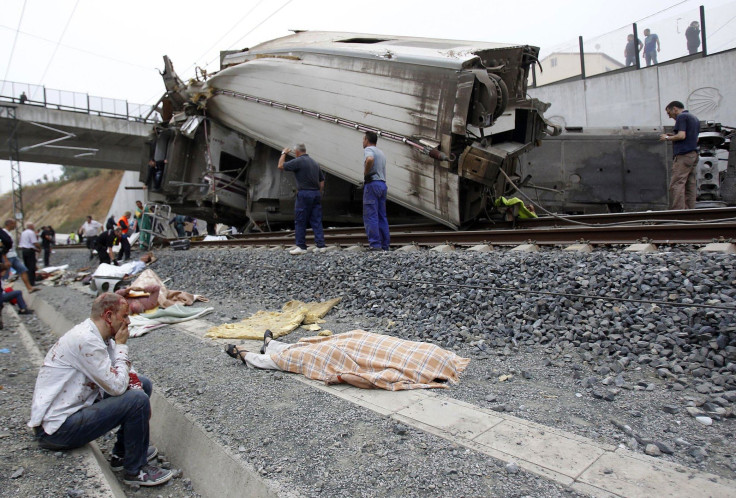Passenger Train Derailment In Northwestern Spain Kills At Least 77, Injures 125; Investigation Underway To Determine Accident's Cause

The death toll in the incident when a high-speed passenger train in the Galicia region of northwestern Spain, derailed on a curve, on Wednesday night, has increased to 77, and more than 125 people have been injured in the crash, reports said.
As of Thursday morning, rescue workers were still trying to help passengers out of the wreckage. There were 218 passengers and an unspecified number of staff on the train at the time of the accident, state-owned Renfe, which owns the train, said in a statement cited by the media.
"The scene is shocking, it's Dante-esque," Alberto Nunez Feijoo, head of the Galicia region, said in a radio interview, according to The Guardian.
Initial investigations show that the crash was an accident and not a terrorist activity. "We are moving away from the hypothesis of sabotage or attack," one unnamed official told BBC. In 2004, Madrid witnessed a series of bomb blasts aboard commuter trains, which killed 191 and wounded 1,800 others.
Spain’s El Pais newspaper, citing sources close to the investigation, reported that the train was travelling at twice the permitted speed limit on the curve, according to the BBC.
Wednesday’s accident was caused when the high-speed passenger train was travelling from the capital city of Madrid to the coastal city of Ferrol, which lies about 370 miles to the northwest, and is known for its ship-building industry.
The train jumped the tracks on the outskirts of Santiago de Compostela, which is about 60 miles to the south of Ferrol, while maneuvering a difficult curve. All eight carriages of the train jumped off the tracks, reports said.
"The train started flipping over, over and over, and carriages ended up on top of others," a passenger told The Guardian, while another added that, "it was going so quickly. It seems that on a curve the train started to twist, and the wagons piled up one on top of the other."
© Copyright IBTimes 2025. All rights reserved.





















